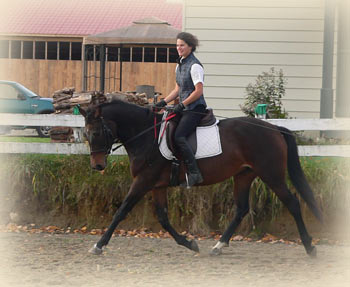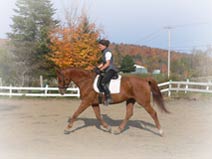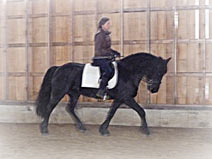

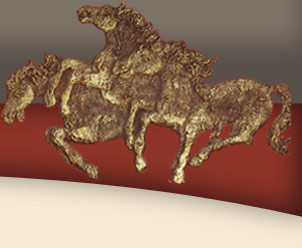

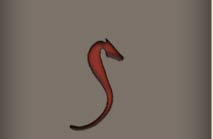


The Evolution of a Holistic Approach
After several years of working with exceptionally talented horses in
Back in
I had learned to dominate a horse and push him through without considering for one minute his ability to comply with requests or respond to invitations rather than demands. I realized that I had spent years acquiring technique for pressing buttons on trained horses and using traditional tools (bits, chains, spurs, whips, side reins etc.) to create the appearance of a well moving or well behaved horse. In short I was controlling the symptoms of unbalanced horses which made them manageable by me but not necessarily by their owner. In order for the training to transfer and be confirmed my job became to help the horse find his own balance. I began to try to cultivate the horse's trust rather than its submission.
I began to look for different ways of communicating what I wanted as well as examine whatever it was about me that either alleviated or exacerbated a problem in a horse. This last became very important because I realized that my own muscular (and I include the brain) bracing or releasing patterns were influencing the horses more than any technique I used. In fact I concluded that the rider’s body use is the single most important training aid.
I spent long hours watching equine interaction in the field as I opened my individual paddocks and allowed them to live more as horses were meant to as well as experimenting with techniques on the ground and in the saddle. This led me to one revelation after another. I now realize that there is a huge difference between how horses are traditionally trained and what they naturally understand. Their alert sensitivity and desire for connectedness could be harnessed and enhanced. Riding education could include learning how to use our bodies to communicate rather than our implements of leverage.
More hours of interaction with increasingly trusting and confident horses have shown me how profoundly hard wired they are for picking up subtle communication and how extremely willing they are to be shown what to do. It is simply their nature. I now believe it is up to us to learn to communicate with them in their language (no beating, spurs or nasty bits necessary) rather than us teaching them to accept and adapt to our forceful ways of dominating.
In the process we can discover ourselves as well as our horse…
